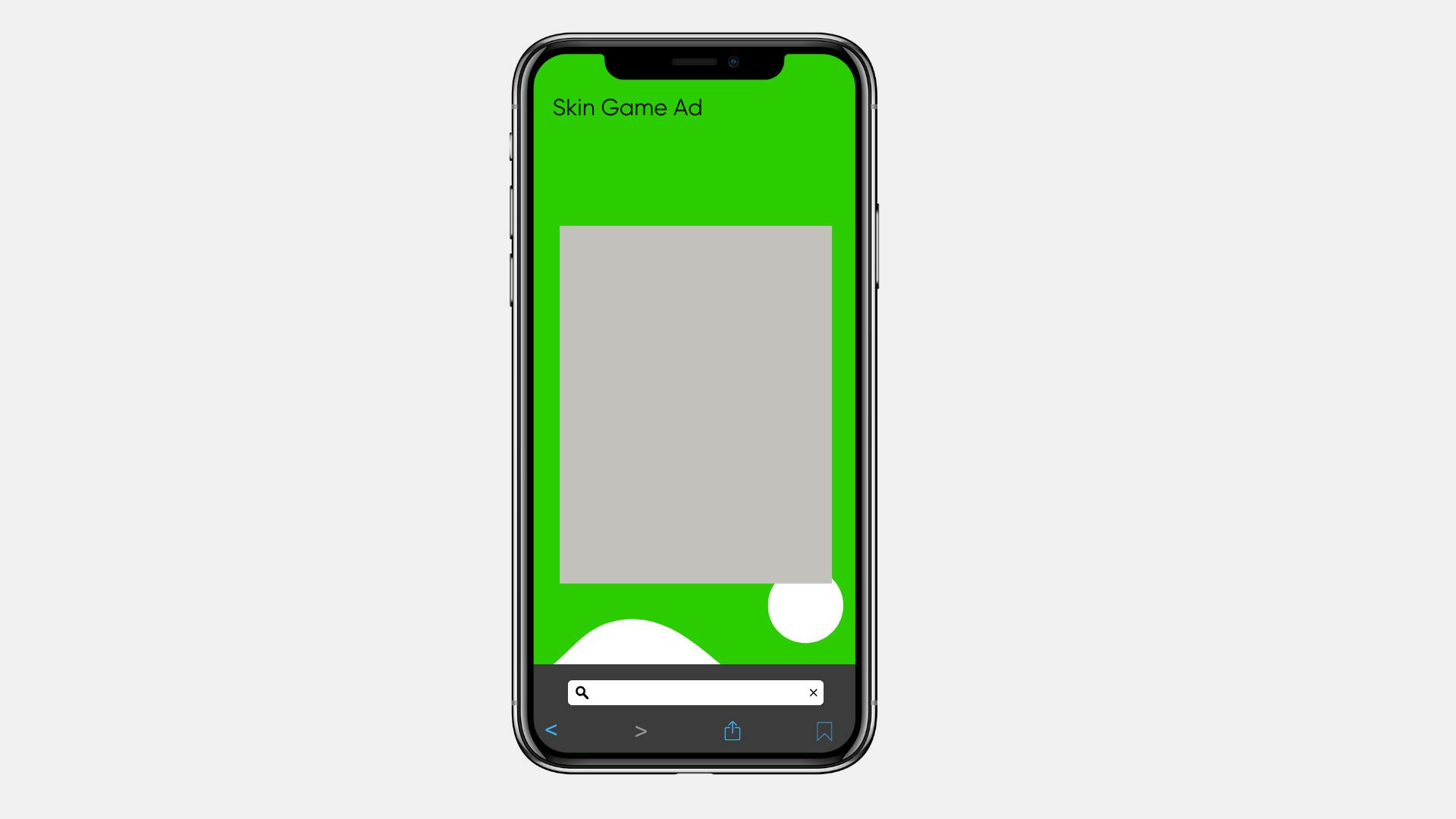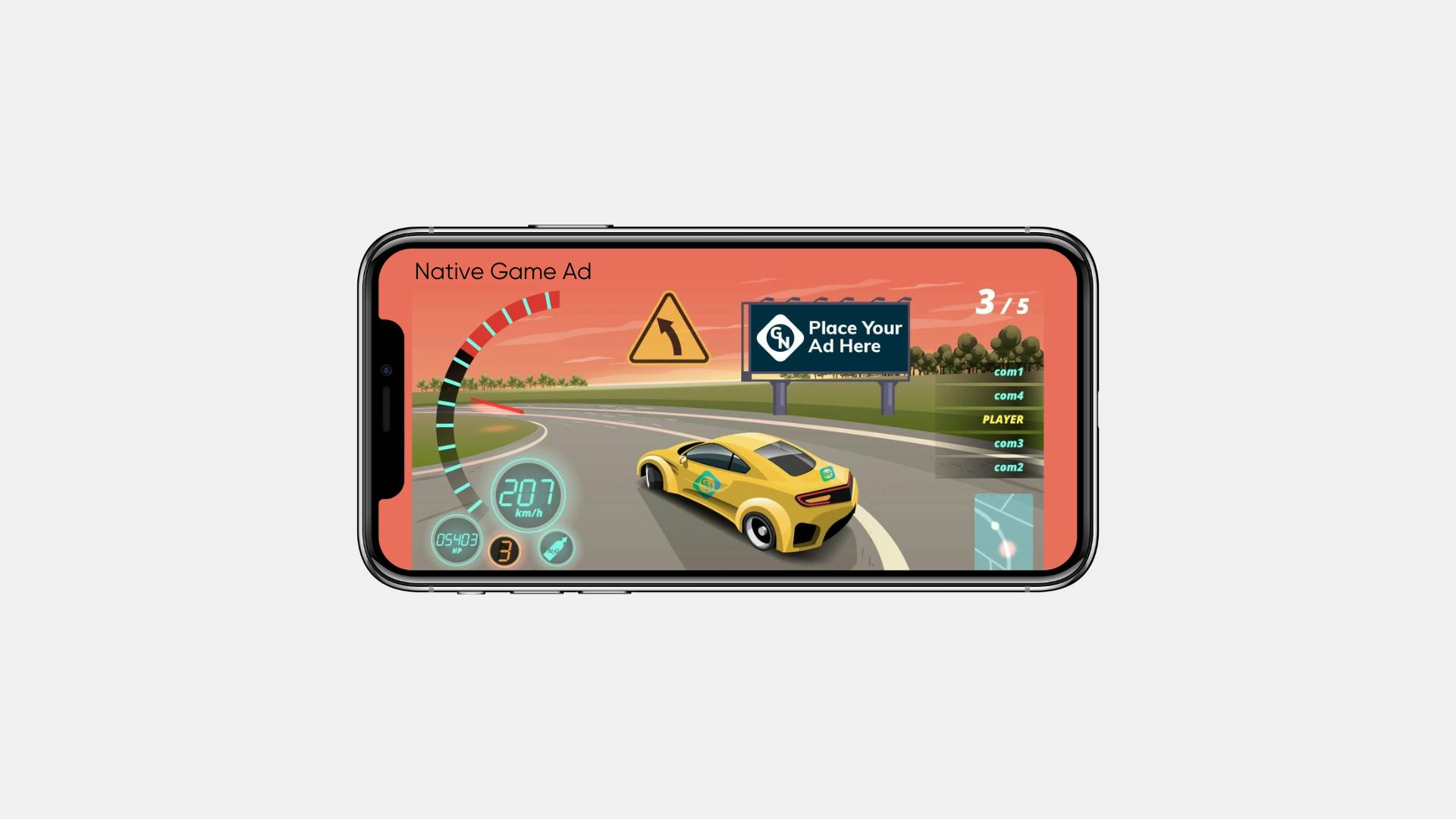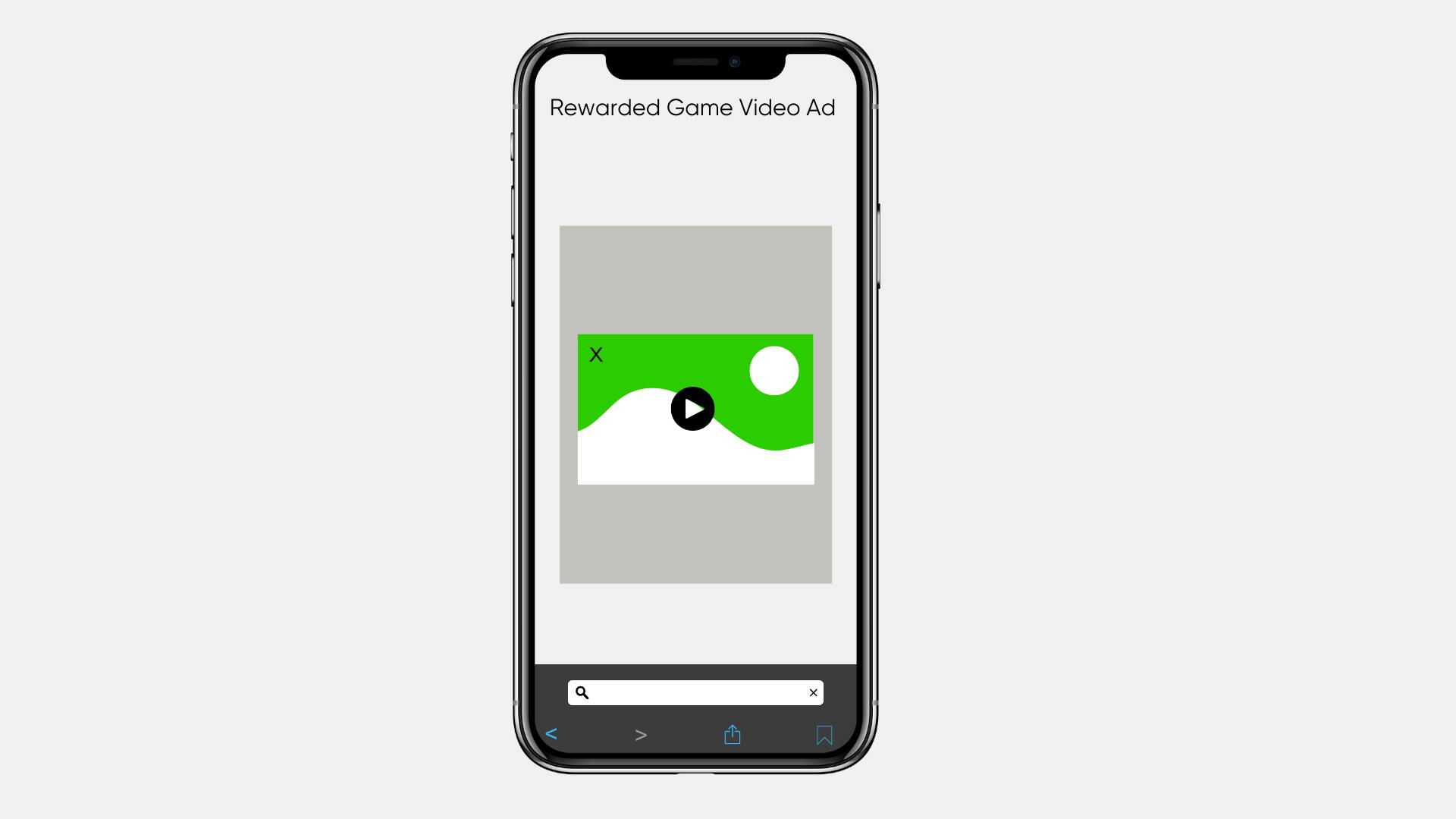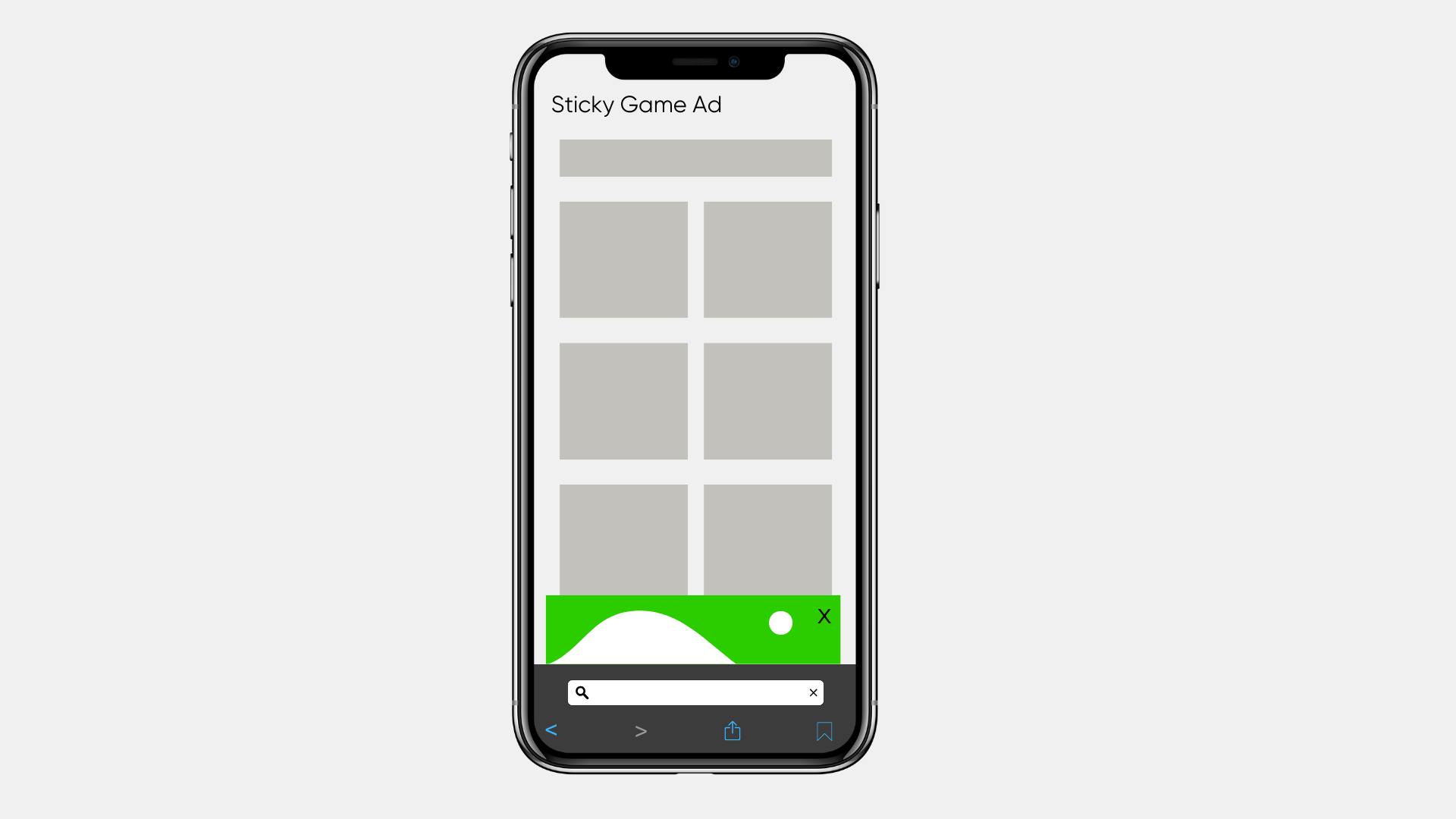Top 5 In-Game Ad Formats for Gaming Publishers

The gaming industry is a powerhouse in the digital world, with its global value projected to surpass $321 billion by 2026. As game developers and publishers look for innovative ways to monetize their content without disrupting the player experience, in-game advertising has emerged as a critical revenue stream. With an estimated 3.24 billion gamers worldwide, the potential to tap into this massive audience is undeniable.
However, for gaming publishers, finding the right balance between delivering a compelling player experience and maximizing ad revenue can be tricky. Players are quick to abandon games if they feel ads are too invasive, making it vital for publishers to choose ad formats that integrate seamlessly into gameplay while still driving conversions and revenue. In this blog, we’ll explore the top ad formats for gaming publishers and how they can enhance user engagement while boosting monetization.
1. Skins (Thematic Ad Integration)
Skins, or custom ad formats that blend with the game’s environment, are a favorite among both advertisers and players. Skins allow brands to integrate their messaging directly into the gameplay without being intrusive. For example, a player’s character could be outfitted with branded gear, or in-game vehicles and objects could feature real-world logos.

Why Skins Work:
- Seamless Experience: Skins don’t disrupt the flow of gameplay, making them a highly immersive ad format. Players see the brand as part of the game world, leading to higher brand recall and engagement.
- Customization: Publishers can offer multiple skin options, making it easier for brands to reach specific target audiences.
- Positive Player Perception: Players are more likely to accept advertising in this format because it enhances the aesthetics of the game.
Best Use Cases: Sports games, racing simulators, or any game where characters and items can be customized with branded elements.
Potential Pitfall: Publishers should ensure that the skins align with the game’s theme and aesthetics. Mismatched ad content can break immersion and frustrate players.
2. Native and Offerwall
Native and offerwall ads offer brands a seamless, minimally intrusive way to engage players within the game. Native ads are designed to feel like part of the game world, appearing as in-game billboards, posters, or branded items that naturally integrate into the environment. Offerwalls provide players with a list of optional ad-based tasks, such as watching videos or downloading apps, which they can complete in exchange for in-game rewards.

Why Native and Offerwall Ads Work:
- Native Ads - Non-Disruptive Immersion: Native ads blend into the game environment, enabling brands to promote within the gameplay itself, which minimizes disruptions and preserves player immersion.
- Offerwalls - Player Choice and Rewards: Offerwalls let players choose their ad interactions, providing a positive, rewarding experience that keeps engagement high without interrupting gameplay.
- Ad Fatigue Prevention: Both formats offer fresh, natural engagement; native ads feel like part of the game, while offerwalls provide optional interactions, reducing ad fatigue and enhancing brand recall.
Best Use Cases: Open-world, simulation, and racing games where branded elements can seamlessly fit into the environment, and any games with virtual currency or rewards where offerwalls add value.
Potential Pitfall: If poorly implemented, native ads can feel forced or out of place, while irrelevant or overly complex offerwall tasks may reduce engagement and disrupt the player experience.
3. Rewarded and Interstitial Video
Video ads are highly effective in gaming, particularly for mobile titles, but also gaining traction in browser-based games. These ads are generally placed during natural pauses allowing players to stay engaged without constant interruptions.

Rewarded Video Ads
Rewarded ads invite players to voluntarily watch ads in exchange for in-game rewards like currency, extra lives, or power-ups. This format creates a positive interaction, enhancing engagement and player satisfaction.
- Benefits: Players are more receptive since they opt in, leading to higher engagement and conversions.
- Best Fit: Casual games, puzzles, and browser games with natural pause points.

Interstitial Video Ads
Interstitial ads are full-screen ads shown at game transition points, such as between levels. Their immersive, attention-grabbing design makes them effective for impactful brand messaging.
- Benefits: High engagement due to full-screen focus; effective when placed during natural breaks.
- Best Fit: Action, arcade, or any game with defined breakpoints.
Both formats offer high engagement and conversion potential—rewarded ads build positive player interactions, while interstitials provide impactful full-screen engagement. Used together strategically, they can enhance player experience and drive results.
Potential Pitfall: While rewarded ads can boost engagement by offering players incentives, overuse or inadequate rewards may lead to player fatigue, making the ads feel less worthwhile. Interstitial ads, on the other hand, are impactful but can be disruptive if shown too frequently or at poorly chosen moments in gameplay. Balancing frequency and timing is essential for both ad types to avoid frustrating players and risking app uninstalls.
4. Playable Ads (Interactive Ads)
Playable ads offer players a hands-on experience, allowing them to try out a short, interactive version of a game or app before committing. This ad format is highly immersive and engaging, as it gives players a taste of the actual gameplay, making it ideal for driving installs and user engagement.
Why Playable Ads Work:
- Hands-On Engagement: By letting players experience the gameplay firsthand, playable ads create a more engaging interaction than traditional ads. This “try-before-you-buy” approach reduces hesitation, increasing conversion rates as players feel more confident about what they’re downloading.
- High Conversion Rates: Playable ads tend to have higher install and engagement rates compared to static or video ads because players are already familiar with the gameplay mechanics and style, making them more likely to install.
- Positive User Experience: Since these ads feel like a part of the game experience, they’re often perceived as less intrusive. Players engage actively, which can lead to stronger brand recall and a more favorable perception of the promoted game or app.
Best Use Cases: Playable ads are especially effective for games that are promoting other games or interactive apps, particularly in casual and hyper-casual genres where short, simple gameplay mechanics are easy to showcase in an ad.
Potential Pitfall: Poorly designed or overly complex playable ads can lead to frustration, especially if they don’t accurately reflect the actual gameplay experience. It’s crucial to ensure that playable ads are optimized for quick, smooth interaction and that they provide a true representation of the game to avoid disappointment or negative associations with the brand.
Playable ads are a powerful tool for gaming publishers looking to boost installs and engagement by providing a fun, interactive way for players to sample new games. When executed well, they seamlessly bridge the gap between advertising and gameplay, creating a positive experience that encourages conversions.
5. Anchor Ads (Sticky Ads)
Anchor ads, or sticky ads, are fixed banners that remain visible at the top or bottom of the screen during gameplay. Unlike traditional banners that rotate or disappear, anchor ads stay in place, providing consistent visibility without disrupting gameplay. This format is particularly useful for games where the player’s focus is on the central area of the screen, leaving space at the edges for ad placement.

Why Anchor Ads Work:
- Persistent Visibility: Since anchor ads remain on screen, they provide continuous exposure to the brand throughout the gameplay session.
- Low Disruption: These ads are less likely to interfere with gameplay since they don’t cover the primary action zone.
- Simple, Effective: Anchor ads are simple to implement and can be a cost-effective solution for publishers looking to monetize while maintaining a clean user experience.
Best Use Cases: Mobile games with static or limited movement screens, such as puzzle or strategy games.
Potential Pitfall: Poor placement of anchor ads can obstruct gameplay or make the game feel cluttered. Publishers should ensure that these ads don’t interfere with crucial game elements.
Choosing the Right Ad Format
In 2024, Aditude acquired CPMStar, a leading Supply-Side Platform (SSP) in the gaming industry, marking a significant shift in how publishers can connect directly with advertisers. CPMStar specializes in gaming, offering premium ad formats and direct connections to top-tier gaming advertisers. This acquisition has strengthened Aditude’s offering by providing gaming publishers with seamless access to advertisers looking to target engaged gaming audiences.
When it comes to in-game advertising for gaming publishers, there’s no one-size-fits-all solution. Each ad format offers its own set of benefits and potential drawbacks, depending on the type of game and the preferences of its player base. While some formats, like native ads and skins, offer seamless integration that enhances the gameplay experience, others, like video and interstitial ads, can deliver more substantial conversions with careful placement.
Ultimately, the best approach for gaming publishers is to experiment with a mix of these ad formats, balancing monetization with player experience. By selecting the right ad formats and ensuring they are strategically placed, gaming publishers can effectively engage their audience while maximizing ad revenue without compromising the integrity of the game. Reach out to Aditude to get started on these ad formats.




